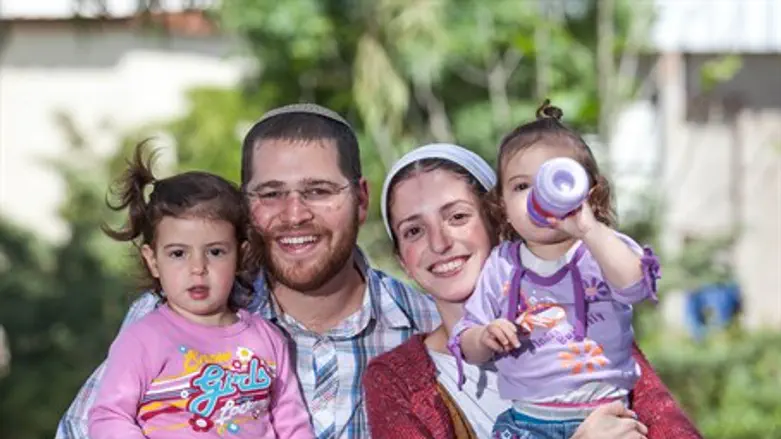
Diplomacy and demographics expert Yoram Ettinger finds that contrary to popular perception and politically-motivated scare tactics, there is actually no "Arab demographic time bomb." Rather, he notes that there is a robust 66% Jewish majority in the entirety of the Land of Israel, including Judea and Samaria - and that it is growing.
There are currently some 6.6 million Jews in Israel, as well as 3.4 million Arabs divided equally between pre-1967 Israel and Judea/Samaria. This number is trending upward, Ettinger states, benefitting from net-positive migration and an unprecedented tailwind of fertility.
Ettinger is the co-founder of the America-Israel Demographic Research Group, and formerly served as Minister for Congressional Affairs with the rank of Ambassador at Israel’s Embassy in Washington, D.C.
He has found that the gap of the Jewish-Arab fertility rate (number of births per woman) has all but closed. Arab women in Israel had an average of 6 births more than their Jewish counterparts in 1969 – and this number has now shrunk a hundred-fold to 0.6. As of a year ago, the Arab rate was 3.17 births per woman, and 3.11 for Jews – and 3.4 when both spouses were Israeli-born.
Israel’s Jewish fertility rate exceeds the rate in most of the Muslim world. In Iran, for instance, women have an average of 1.83 births, and 2.12 in Saudi Arabia. Ettinger's take is that the dropping Arab fertility rates reflect accelerated modernity, while "the Jewish fertility rate is bolstered by optimism, patriotism, attachment to roots and collective responsibility."
The number of Jewish births in Israel has risen hugely over the last two decades, from 80,400 in 1995, to 136,000 last year – a 68% increase. Over the same period, the annual number of Arab births in pre-1967 Israel has stabilized at 40,000. In 1995, Jewish births constituted 69% of total births in Israel, but are now approaching 78%.
In Judea and Samaria, the Arab birth rate has dropped drastically, from 5 births per woman 20 years ago to 2.76 in 2015.
In terms of migration from Judea and Samaria, Arabs are moving out as Jews are moving in. The negative Arab net-migration from Judea and Samaria has been climbing: 18,000 in 2012, 20,000 in 2013, and 25,000 in 2014. Ettinger says that a pro-active Aliyah policy, which has been suspended since 1993, would produce another strong wave of Aliyah.
Ettinger has long claimed that Arab sources wildly exaggerate the population numbers in Judea and Samaria. In fact, he says, in December of 2014, the PA's Central Bureau of Statistics reported 2.8 million people – when in fact the number was actually only 1.7 million. This 66% over-count was effected, inter alia, as follows:
- 400,000 residents living abroad for over a year are included, as documented in many sources provided by Ettinger, including a World Bank report.
- 300,000 Jerusalem Arabs, bearing Israeli I.D. cards, are double-counted as Israelis (by Israel) and PA residents (by the PA).
- Over 100,000 Arabs, mostly from Judea and Samaria, are married to Israeli-Arabs and possess Israeli I.D. cards – and are double-counted by both the PA and Israel.
- The Palestinian Authority's 2007 population census included Arabs born in 1845 and 1850.
"Israel’s fertility rate is unique," Ettinger concludes, "both quantitatively and qualitatively, among the world’s advanced economies. It is a source of reality-based optimism, producing substantial economic and national security opportunities."